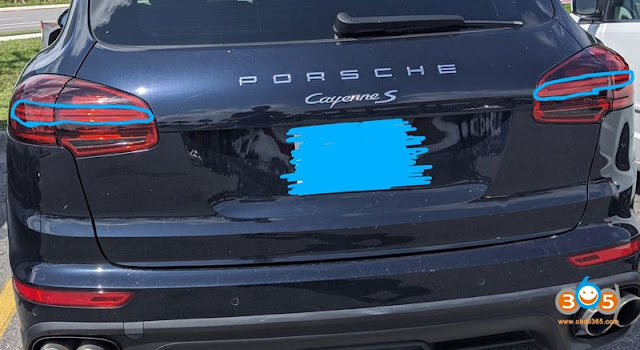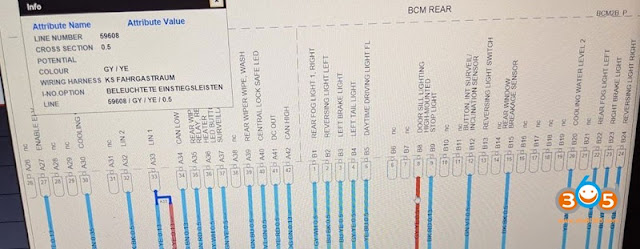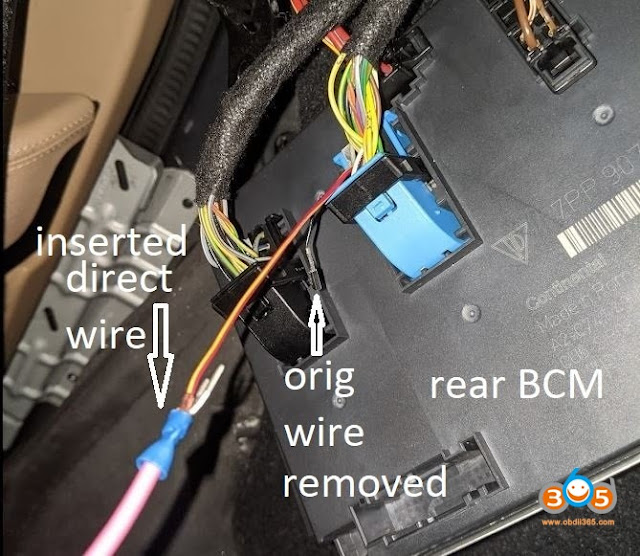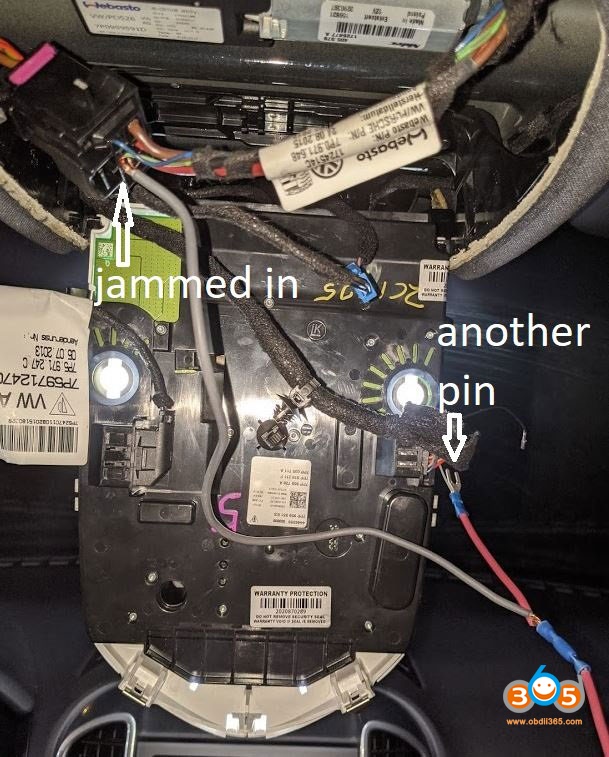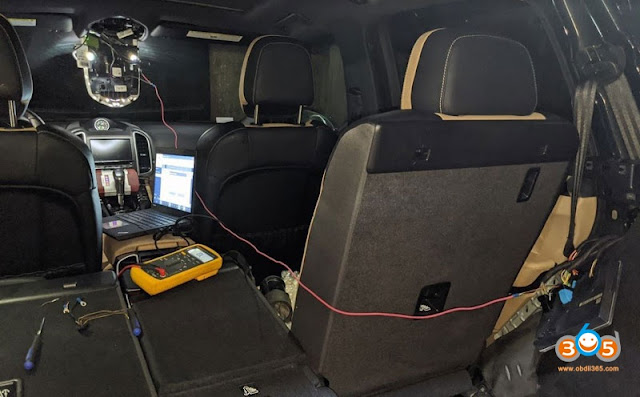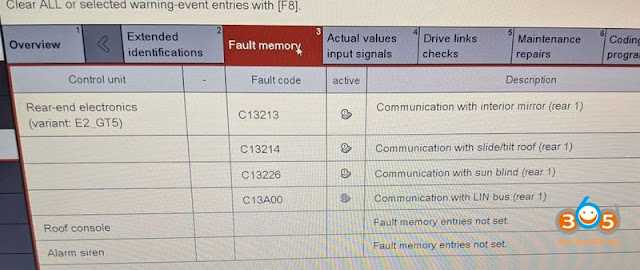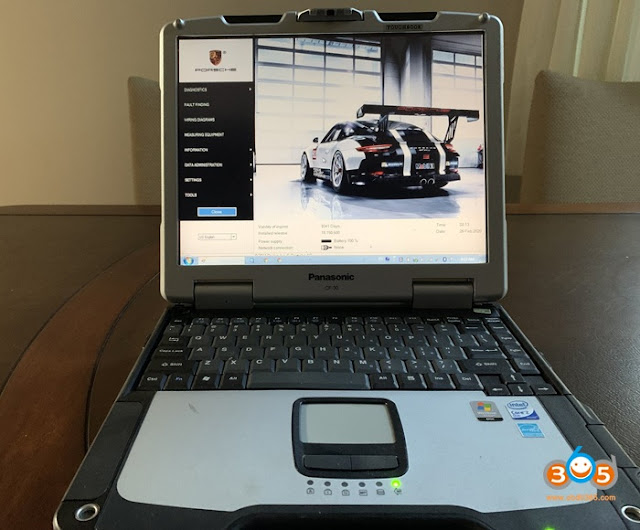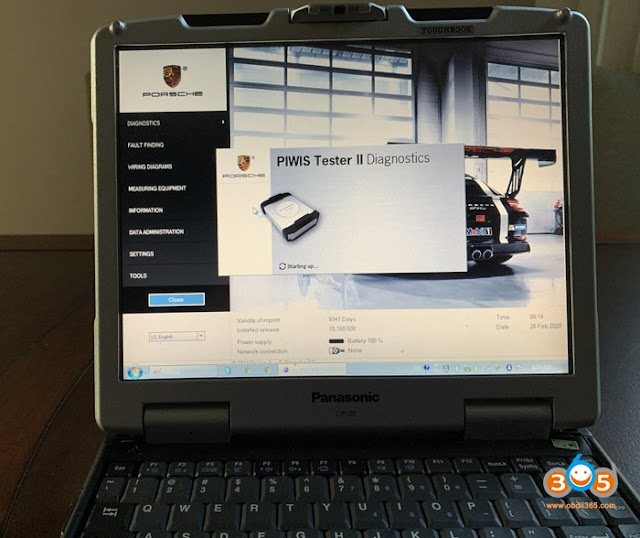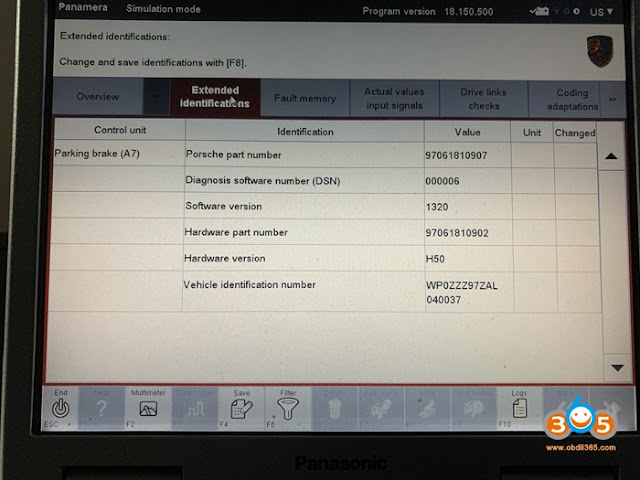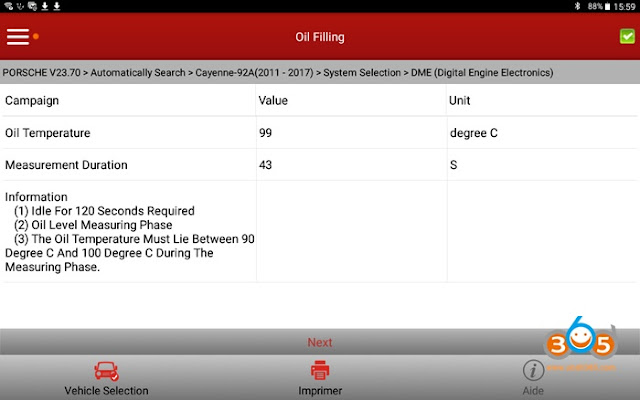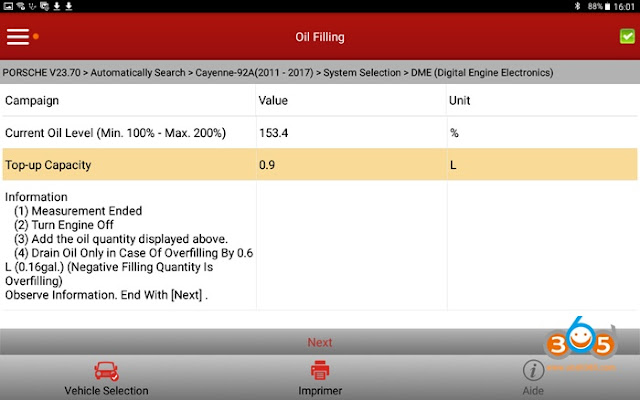Car model: Porsche 958 Cayenne
Issue:
Standing outside vehicle with car off I press lock on the fob and everything happens as I expect: lights flash and turn off… Chirp chirp… Car locks… AntiTheft light starts blinking…
Same results when locking manually.
Same results when locking manually.
But exactly 20 seconds later something unexpected occurs. Exterior lights start coming on!
Then 10 seconds later more lights come on!
And all these lights stay on until the battery dies.
The battery was completely dead upon purchase and they swapped it out before I left the lot.
The battery was completely dead upon purchase and they swapped it out before I left the lot.
Issue reproduces for various positions of light selector switch.
If I walk away from the car with the car unlocked then eventually (couple of minutes?) the front lights come on but I think not the rear lights.
Solution:
I went ahead and ordered a pre-owned ballast for $26 hoping that might be it. Just ordered a Porsche PIWIS tester as well.
Good call on a thorough visual inspection I’ll do that.
Good call on a thorough visual inspection I’ll do that.
Let’s hone in on what stood out most from PIWIS diagnostics:
1. The roof console is a sub-section of the rear electronics module, but the roof console part number could not be read.
Possibilities I thought of: Wires are missing/incorrect; One or more wires are grounded; Rear BCM was replaced but as wrong revision or was coded incorrectly; Rear BCM was replaced but must be mated to the car via dealer online coding; Roof console is sort-of seen but needs to be taught
Evaluation: Unlikely that rear BCM would fail or be removed-even by a savvy thief-therefore unlikely that the BCM was replaced. Some features of rear BCM I could control via PIWIS so it is probably coded correctly. I verified all wires exist except that alarm horn wire but no evidence in harness of it being cut. Let’s focus on the idea that roof console cannot communicate and see what wires it shares with BCM.
1. The roof console is a sub-section of the rear electronics module, but the roof console part number could not be read.
Possibilities I thought of: Wires are missing/incorrect; One or more wires are grounded; Rear BCM was replaced but as wrong revision or was coded incorrectly; Rear BCM was replaced but must be mated to the car via dealer online coding; Roof console is sort-of seen but needs to be taught
Evaluation: Unlikely that rear BCM would fail or be removed-even by a savvy thief-therefore unlikely that the BCM was replaced. Some features of rear BCM I could control via PIWIS so it is probably coded correctly. I verified all wires exist except that alarm horn wire but no evidence in harness of it being cut. Let’s focus on the idea that roof console cannot communicate and see what wires it shares with BCM.
2. Rear-end electronics board has one error: Communication with LIN bus.
Possibilities I thought of: Wire is missing; wire is damaged; wire is grounded; Board is bad; Board is coded incorrectly
Possibilities suggested by PIWIS Fault Finding: “Short circuit to B+/ground or open circuit in the line.” , “”Cancellation of communication due to bit error.”
Evaluation: I opened up the module and visually inspected the board for burn marks or melted components. I visually inspected the wires as well after popping the trays of wires out of the connectors. They have little tiny numbers printed on the connectors, the trays, and the sockets that need to be lined up.
I only have a couple hours a day where it was possible to work on car so I went ahead and ordered a replacement roof console for $70. I can always resell it if I don’t need it. It included the connectors chopped from the harness and those connectors came up clutch later.
Possibilities I thought of: Wire is missing; wire is damaged; wire is grounded; Board is bad; Board is coded incorrectly
Possibilities suggested by PIWIS Fault Finding: “Short circuit to B+/ground or open circuit in the line.” , “”Cancellation of communication due to bit error.”
Evaluation: I opened up the module and visually inspected the board for burn marks or melted components. I visually inspected the wires as well after popping the trays of wires out of the connectors. They have little tiny numbers printed on the connectors, the trays, and the sockets that need to be lined up.
I only have a couple hours a day where it was possible to work on car so I went ahead and ordered a replacement roof console for $70. I can always resell it if I don’t need it. It included the connectors chopped from the harness and those connectors came up clutch later.
The console arrived yesterday so I connected to PIWIS and got the same errors. I was unable to teach this roof console as well. This result further points to the wiring being the issue.
The wiring diagrams for PIWIS have an added advantage over those in the workshop manual in that you can click one terminal end and it will zip you over to the other end. I read all wires for the rear electronics module for relevance:
Terminal 33 on connector A is titled “LIN 1”, which PIWIS told us cannot communicate. Scrolling down, I see that black/yellow wire has a few things spliced together.
We can see that the splices on that LIN1 wire from rear BCM are:
-Pin 5 on the panoramic roof connector (visible in roof console cavity)
-Pin 1 on connector A of the Sliding Roof (no idea where this is)
-Pin 12 of connector A of the Roof console
-Pin 2 of connector A for the interior mirror (rear view mirror).
-Pin 5 on the panoramic roof connector (visible in roof console cavity)
-Pin 1 on connector A of the Sliding Roof (no idea where this is)
-Pin 12 of connector A of the Roof console
-Pin 2 of connector A for the interior mirror (rear view mirror).
I set my multimeter to resistance to “tone out” the wires I know the location of and see if they are connected. I used a wire insulation piercing probe on LIN1 at the BCM connector black/yellow wire (if you don’t have one you should get one). Sure enough they are all connected, ringing and registering ~1 Ohm. I see what the resistance to ground is (expected to be infinite, aka open circuit) but the meter rings and says 60 Ohms! Might be onto something here! I see in wiring diagram that BCM has a LIN 2… I try to tone that with ground and get infinite resistance.
Next I wanted to re-run the wires directly. I didn’t want to cut any factory wires if I didn’t have to because there isn’t a whole lot of slack and I don’t have many of my proper tools on the road with me. I just had a $5 harbor freight cheap-o crimper set,
Three of the four wires I want to replace are the same type of pin; coincidentally and conveniently I have many spare of these already crimped to 4 inch strands of wire thanks to the connectors from used ebay item. I slide out the factory pins in question and run my own wires. The small pins could be removed fairly easily with a small flathead or pick tool.
Three of the four wires I want to replace are the same type of pin; coincidentally and conveniently I have many spare of these already crimped to 4 inch strands of wire thanks to the connectors from used ebay item. I slide out the factory pins in question and run my own wires. The small pins could be removed fairly easily with a small flathead or pick tool.
For the bigger wire with bigger pin in the panoramic roof connector I used my VW pin removal tool that I bought for changing the fuel flange plug on the 955 CTT.


That way I could have connector connected but not that wire with the mystery ground on it. On the other side of connector I just shoved a spliced end of my ghetto wiring harness lol.
I double checked my work… popped in the key… and the dome light sprang to life! Great sign! I connected PIWIS and could read the roof console part number.
I had new errors but probably because I couldn’t find the 5th wire in the splice so sunroof still not working yet. Time to plan the route of my new wiring harness (obviously I’ll make it much prettier, safer, protected, and well-labeled.
Thanks again to those following along and contributing ideas.
The experience makes me want to find a few dirt cheap Porsche or VW wiring harnesses that have crimp pins of various sizes to aid in any future electrical troubleshooting adventures.
The experience makes me want to find a few dirt cheap Porsche or VW wiring harnesses that have crimp pins of various sizes to aid in any future electrical troubleshooting adventures.
Credits to @ Jonathan H
Good source of PIWIS:
Piwis 3 V38.900.000 PT3G with SSD 128G with Panasonic CF-MX3 Laptop
or VXDIAG Piwis 3 V38.900.000 with SSD 240G & Lenovo T440P Laptop
https://www.obdii365.com/service/porsche-piwis-fixed-cayenne-exterior-lighting-issue.html


